| |
 |
|
|
|
|
 |
|
|
| |
Create a replica of a scarlet macaw with Styrofoam® balls, plaster cloth, bright paint, and feathers.
Age Range: 7 to 12
Grade Range: 1 to 6
Skill level: Advanced
Appropriate for these special events:
Every day and rainy days
Supports Subject Area(s) of:
Social Studies
Language Arts – e.g. step by step instructions
Math – e.g. measuring
|

The scarlet macaw can fly at speeds up to 35 miles per hour, often flying in pairs or small flocks up to 20 birds. In captivity, Scarlet Macaws have a life span of up to 80 years. They inhabit the tropical rainforests of Mexico, Guatemala, Belize, Colombia, Ecuador, Peru, and Brazil. The Scarlet Macaw is about 35 inches long. The feathers are bright red with bits of yellow, orange and blue on the wings. The bill is very curved. The feet are zygodactylous; the 2 outer toes point backwards and grip in opposition to the 2 forward-pointing toes. Males and females are similar in appearance. Scarlet Macaws eat fruit, seeds, and nuts. Macaws nest in holes located high in deciduous trees. Females lay 2 plain white eggs in each clutch. Both parents incubate the eggs. The young stay with the parents for up to 2 years.
|
- 1 yard Pepperell Rexlace® vinyl craft lacing
- Elmer’s® 3D™ Washable Paint Pens-glitter colors
- Tempera powder: red, yellow, blue, orange, black, white or acrylic paints
- Elmer’s® Craft Bond™ Tacky Glue
- 2 wiggle eyes
- Several small red feathers
- STYROFOAM™ Brand Foam: egg 3 1/16” x 2 5/16”
- STYROFOAM™ Brand Foam: ball 1 1/2”
- ACTIVA® Rigid-Wrap™ Plaster Cloth

- Elmer’s® Glue-All™
- Bowl of warm water
- Cardboard tube
- Toothpick
- Wooden skewer
- Wax paper or newspaper work surface
|
- Flatten adjoining areas of Styrofoam head ball and egg body on a flat surface. Insert a toothpick into Styrofoam ball. Glue ball head on egg body.

- Hanger: Poke two holes, ½” apart through upper body using a wooden skewer. Thread vinyl lacing through holes with ends meeting on top. Tie lacing ends together to complete the hanging loop.
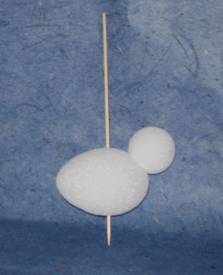 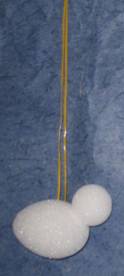
- Cover Body Base: Cut seven 4” squares plaster cloth. Cut each square diagonally into four triangles. Dip a triangle in warm water then adhere on Styrofoam form. Use 26 triangles to cover the body base, reserving two triangles for later use. Place body base on cardboard tube.
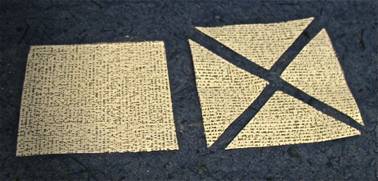
- Beak & Tail: Cut a 1 1/4:” x 4” strip plaster cloth. Twist the strip end into a cone shape. Position cone-beak on macaw head with other end of strip on head top. Dip fingers in warm water then rub plaster cloth on head top. Shape cone-beak to curve downward with wet fingers. Cut three plaster cloth tail pieces according to pattern. Hold together and dip in warm water. Position on body back. Tilt bird body back on cardboard tube allowing tail feathers to dry away from bird body. Dip a plaster cloth triangle in warm water. Position triangle on body back, securing tail feathers.
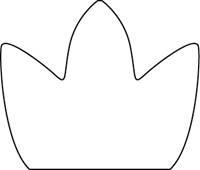
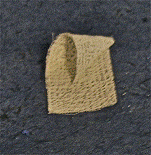 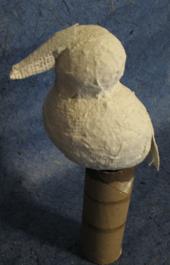 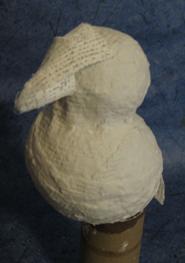
 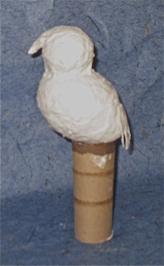
- Wings & Lower Beak: Hold three pieces of plaster cloth together with wing pattern on top. Cut two sets of three wings according to pattern. Place body base upside down on cardboard tube. Dip a set of wings in warm water. Position wing on body side allowing wing top to drape. Position other wing in the same manner.
Dip remaining plaster cloth triangle in warm water. Roll into a ball. Position ball under cone-shaped beak. Rub ball sides onto chin area.
Using skewer, poke a hole under small tail feathers for placement of red tail feathers.
Note: As plaster cloth is setting up, you can trim frayed edges of tail and wings with scissors.
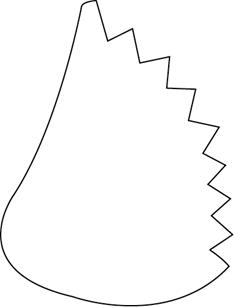
 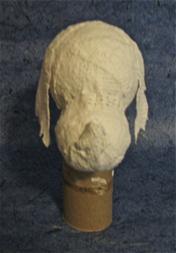 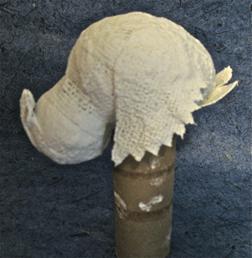
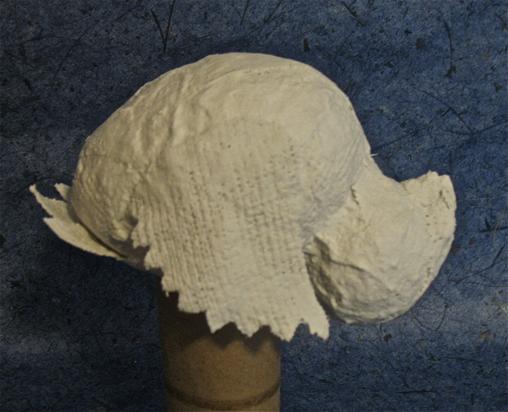
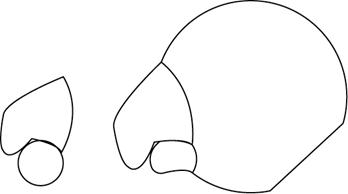
6. Paint: Self-Sealing Poly-Paint: Mix ½” puddle of Elmer’s Glue-All with equal parts tempera powder. Wet brush in water. Mix paint well with brush. Paint macaw according to diagram. Apply accents with glitter glue.
7. Apply Tacky Glue on red feather tips. Insert feathers into Styrofoam, in hole punctured under small tail feathers. Glue wiggle eyes in position.
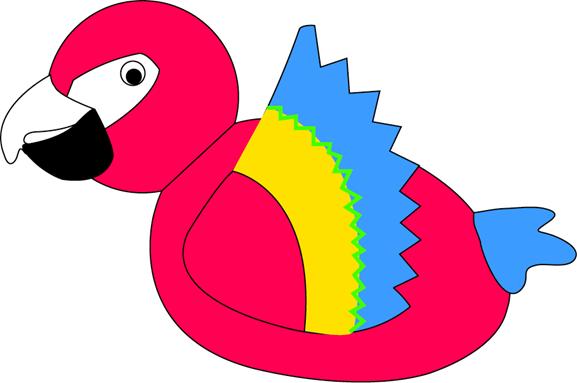
|
Travel around the world and experience the culture, arts and traditions that make the world unique. Visit Peru, Italy, Canada, USA, Australia, Japan, China, Russia, India, Mexico, Ghana, Egypt, and Scotland.
Click here to order now!
|
|
| |
|
|
Home
| Television | Projects
| Book Order | Helping
Kids | Teachers | Philosophy
E-mail questions about Hands On Crafts for Kids to info@craftsforkids.com
© Copyright 2010 Katherine Stull, Inc. |


























